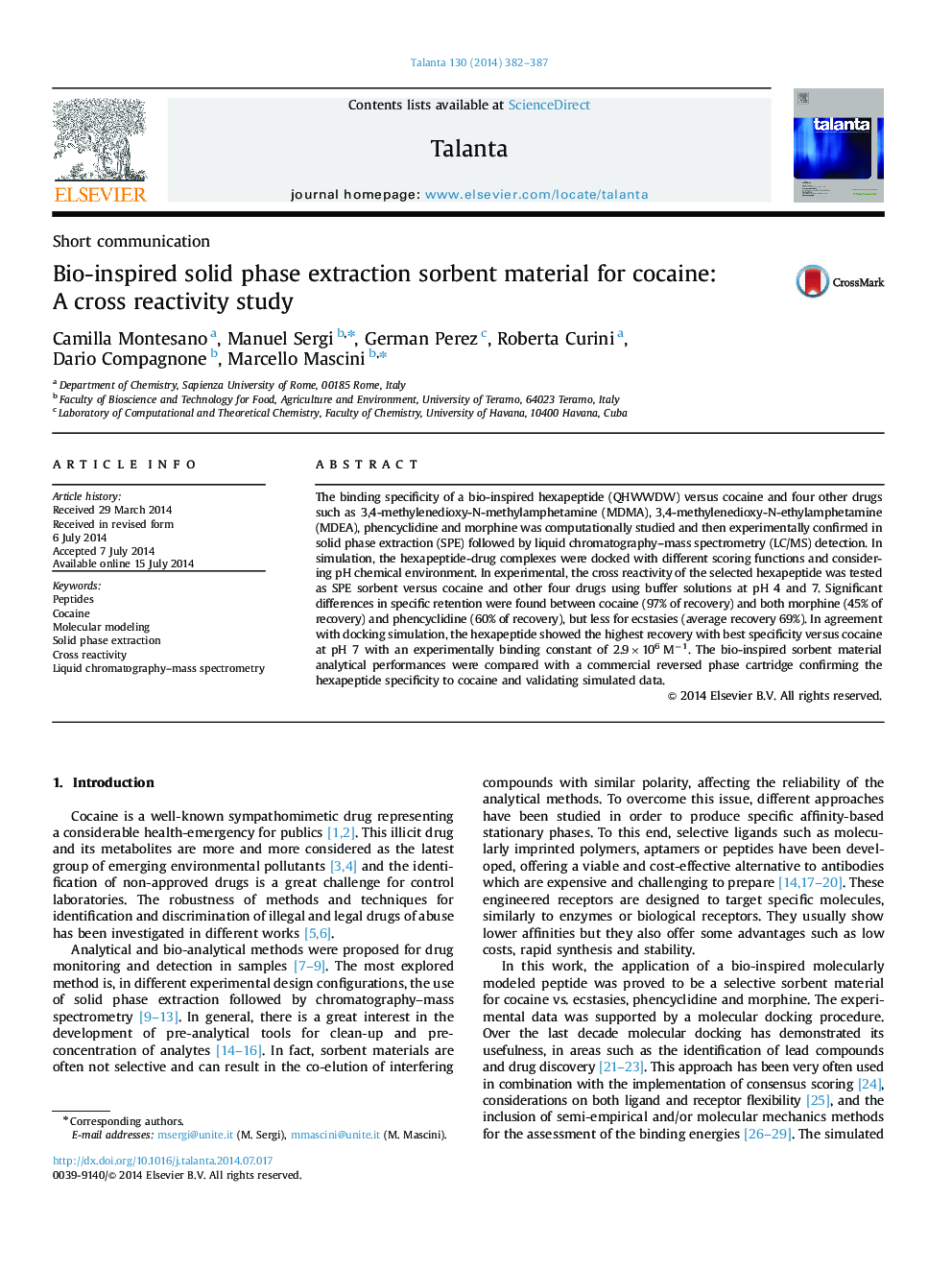| کد مقاله | کد نشریه | سال انتشار | مقاله انگلیسی | نسخه تمام متن |
|---|---|---|---|---|
| 1243606 | 1495805 | 2014 | 6 صفحه PDF | دانلود رایگان |
• The binding of a hexapeptide versus five drugs was computationally studied considering pH chemical environment
• The hexapeptide selectivity was confirmed by solid phase extraction at pH 4 and 7
• Significant differences in specific absorption were found between cocaine (97% of recovery) and the other four drugs
• The cocaine-peptide best specificity was at pH 7 with a binding constant of 2×106 M−1
The binding specificity of a bio-inspired hexapeptide (QHWWDW) versus cocaine and four other drugs such as 3,4-methylenedioxy-N-methylamphetamine (MDMA), 3,4-methylenedioxy-N-ethylamphetamine (MDEA), phencyclidine and morphine was computationally studied and then experimentally confirmed in solid phase extraction (SPE) followed by liquid chromatography–mass spectrometry (LC/MS) detection. In simulation, the hexapeptide-drug complexes were docked with different scoring functions and considering pH chemical environment. In experimental, the cross reactivity of the selected hexapeptide was tested as SPE sorbent versus cocaine and other four drugs using buffer solutions at pH 4 and 7. Significant differences in specific retention were found between cocaine (97% of recovery) and both morphine (45% of recovery) and phencyclidine (60% of recovery), but less for ecstasies (average recovery 69%). In agreement with docking simulation, the hexapeptide showed the highest recovery with best specificity versus cocaine at pH 7 with an experimentally binding constant of 2.9×106 M−1. The bio-inspired sorbent material analytical performances were compared with a commercial reversed phase cartridge confirming the hexapeptide specificity to cocaine and validating simulated data.
Figure optionsDownload as PowerPoint slide
Journal: Talanta - Volume 130, 1 December 2014, Pages 382–387
